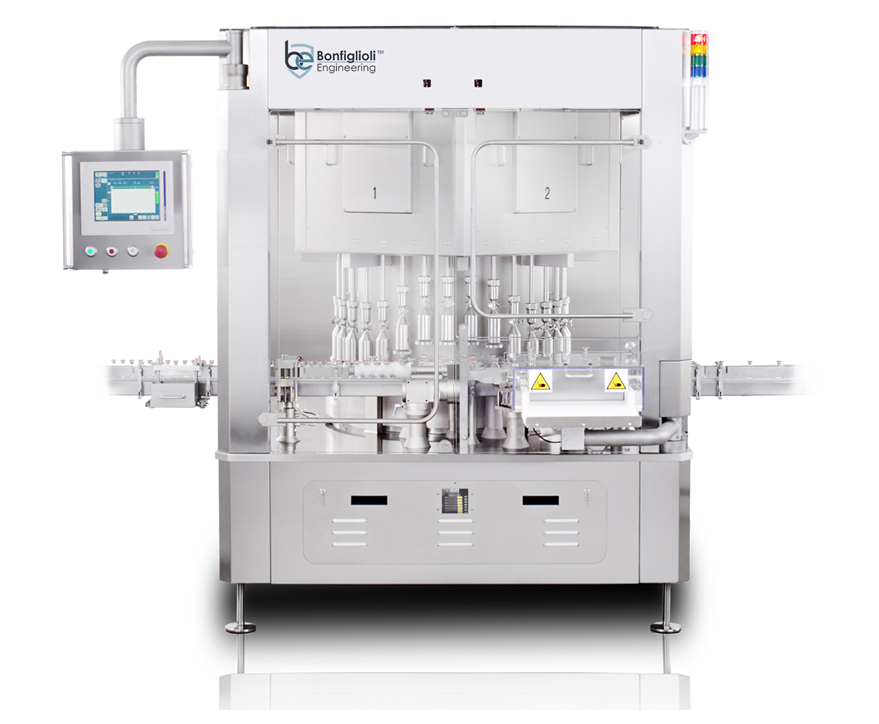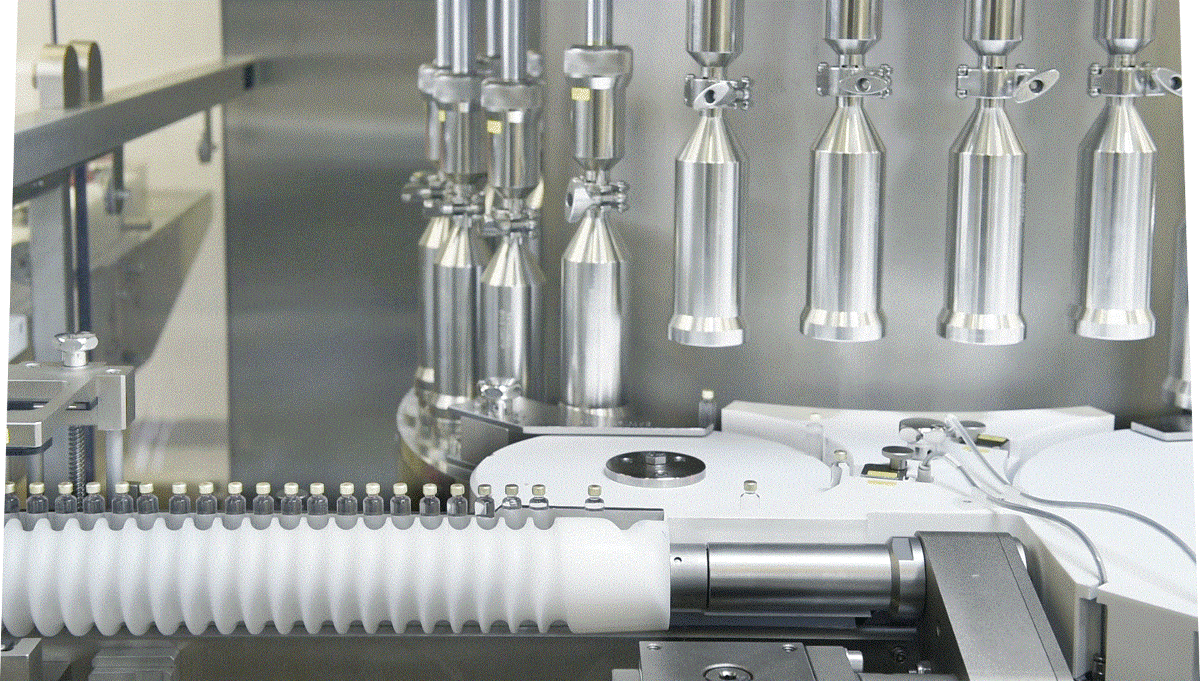By Bonfiglioli Engineering…
Bonfiglioli Engineering and USP 1207 CCIT testing
Bonfiglioli Engineering has developed a suite of comprehensive solutions for advanced leak testing in pharmaceutical and other applications that require Container Closure Integrity Testing (CCIT), including pharmaceutical products that follow United States Pharmacopeia General Chapter 1207 (USP 1207) guidelines.
These solutions include Visual Inspection, Vacuum Decay, Pressure Decay and Headspace Gas Analysis all of which can be used separately or in conjunction to ensure total package container integrity.
The road to USP 1207
As our understanding of biology and medicine has improved, we have come to realize that even the smallest flaw in container integrity poses a critical threat to sterility, stability, and overall safety of its contents. This understanding resulted in the pharmaceutical industry becoming ever more stringent in its quality control requirements, especially as we realized that leaks could occur anywhere in the container, such as a misplaced rubber-stopper or crack in the glass.
All of these defects can be picked up by Container Closure Integrity Testing (CCIT) assays that evaluate the adequacy of container closure systems to maintain a sterile barrier against potential contaminants.
FDA guidance for safeguarding the sterility of drug products through packaging integrity testing was first formulated in 1998 but it took a further decade for CCIT to be officially recognized as the preferred strategy for confirming the sterility of medical products. This recognition came with the Agency’s 2008 publication of Container and Closure System Integrity Testing in Lieu of Sterility Testing as a Component of the Stability Protocol for Sterile Products. This reiterated the importance of CCIT and the main limitations of sterility tests (chance of false positive readings due to introduced microbial contaminants, along with destructive testing eliminating the possibility to re-examine samples).
Also in 2008, the European Commission (EC) published Volume 4 of The rules governing medicinal products in the European Union, in which Annex 1 specifically stipulates that: “Containers should be closed by appropriately validated methods. Containers closed by fusion, e.g., glass or plastic ampoules, should be subject to 100% integrity testing. Samples of other containers should be checked for integrity according to appropriate procedures.”
What these various guidelines failed to address was how container closure integrity testing should be performed. This gap was filled in 2016 with the formulation of USP 1207 Package Integrity Evaluation – Sterile Products, the most thorough guidance to date on CCIT concepts for sterile and critical products such as vials and syringes. The EC followed in 2017 with its revised Annex 1, which included new technical requirements for CCIT.
USP 1207 requirements: deterministic vs. probabilistic
USP 1207 provides an overview of common CCIT tests and categorizes them as being either probabilistic or deterministic. The most commonly deployed deterministic tests are vacuum decay, pressure decay, laser-based headspace analysis, HVLD and tracer container gas analysis.
Crucially, USP 1207 states a preference for deterministic tests because they are non-invasive and non-destructive, produce repeatable and predictable results and are suited for testing 100% of a production run. Furthermore, probabilistic tests are also recognized as qualitative, producing results that are dependent on technique, sample preparation and operator variability, making them time consuming and unreliable. Nevertheless, USP 1207 still recognizes a role for probabilistic testing, particularly with low value, low potency products such as analgesics.
Probabilistic testing was the industry standard for many years but recently there has been a marked transition to deterministic methods not only as they are more accurate and reliable, but also driven by the Falsified Medicine Directive (FMD) and its serialization requirements. Pharma companies investing in track and trace systems want to be able to identify whether an individual pack within a batch has been leak tested so that they have this data available in the event of a recall.
Approved USP 1207 CCIT methods
The United States Pharmacopeia (USP) and Food and Drug Administration (FDA) impose strict requirements for Container Closure Integrity Testing.
As per the Title 21 Code of Federal Regulations (CFR) part 211.94, container closure systems must provide adequate protection against anticipated external factors in storage and use that can cause deterioration or contamination of the drug product. CFR 21 Part 211.94 also establishes the standards specifications and methods of testing during the validation procedures.
The leak detection guidelines establish that container security testing methods should use analytical detection techniques appropriate to the method and compatible with the specific product being tested. Validation of methods should be specific to the product container and closure system or product type.
The baseline for establishing what container is considered leaking and which is conforming is the identification of positive and negative samples (intended as samples with a leak and samples with no leak) that can be used for comparing results during testing.
Other than the leak test method and positive and negative controls, which should provide adequate assurance of container integrity (USP 1207.1), the criteria for acceptance must also be determined, meaning that all negative controls should pass while all positives must fail with a defined set of parameters. Upper and lower limits of detection should also be established, followed by a validation protocol that highlights the parameters established during the process. Validation is essential to prove test method precision, repeatability, accuracy, and detection limits.
In general, a Container Closure Integrity Testing method requires the creation of positive and negative controls, taking into consideration the design, material, expected package leak features and content (this is done to anticipate as many defects as possible). Control samples are inspected together with the intact samples to confirm the ability to differentiate between them.
One way in which positive controls can be created is the use of laser drilled holes, in which the sample geometry remains intact and the simulation resembles natural defects in glass (cracks) and polymers (micro holes), rather than an ideal, perfectly circular pinhole. The size of the simulated leak in the laser-drilled hole requires verification.
USP 1207 itemizes a number of approved common CCIT deterministic methods.
- Electrical conductivity and capacitance test (also called High Voltage Leak Detection or HVLD): This assay applies a high voltage and high frequency charge across the sample to identify leaks in liquid filled syringes, vials and ampoules, where the packaging is less conductive than the product inside.
- Container gas analysis: This analysis passes light from a diode laser through the headspace region of the sealed container to measure oxygen, nitrogen, carbon dioxide, water vapor or internal pressure there.
- Vacuum decay: This method uses a vacuum to detect leaks in the product being tested. The product is placed inside a vacuum chamber and two pressure value readings are taken after a time interval, following pressure stabilization. If the difference between the two values is greater than the physiological threshold determined during the machine setting, the container has a leak and, therefore, must be discarded.
- Pressure decay: In this method, the container is placed in a test fixture that is pressurized to a target level. The chamber is then allowed to stabilize and the pressure is measured over a set period of time. Any loss in pressure indicates a leak. This is often the method of choice for lyophilized, oil-based, viscous or toxic products.
- Tracer gas (vacuum mode): This highly sensitive assay uses mass spectrometer-based leak detectors to detect and quantitively measure the leakage rate of tracer gases such as hydrogen or helium. Test samples are flooded with tracer gas and placed inside a vacuum chamber. When the chamber is evacuated, any leaking gas is drawn through the analyzer.
- Mass extraction: Mass extraction leak detection operates by drawing a vacuum on a sample enclosed in a chamber. The instrument monitors the airflow required to sustain a specific vacuum level. The flow required to keep the vacuum steady is proportional to the flow escaping from leaks in the sample under test.
The method of CCIT chosen will vary according to the desired result, such as the leak rate of the entire container, potential for microbial ingress, or detection of presence of leak paths.
Bonfiglioli Engineering offers advanced CCIT expertise
Bonfiglioli Engineering has a long and distinguished history of pioneering advanced container integrity testing solutions, stretching back to 1974 when it introduced an ingenious method for leak testing bottles formed from plastics. During the 1980s, Bonfiglioli Engineering began producing container integrity platforms for cans and aerosols, and developed its first patented rotary pharmaceutical package testing platform for vials and bottles.
Over time, Bonfiglioli further expanded their inspection portfolio adding technologies such as headspace Gas Analysis (HGA) and Automatic Visual Inspection (AVI); yet the real breakthrough happened in 2009 with the creation of our “Combi” (Combined) machines.
Combi machines provide the ultimate quality assurance tool by combining more than one technology on a single machine frame, thus allowing us to run multiple checks on a container with unmatched line-space utilization efficiency. The first of such machines was the PK-V/F + PK-VIS, a combined leak testing + automatic visual inspection solution for products that range from Vials to BFS bottles to Ampoules. This machine laid the groundwork for all future developments such the PK-V+HGA (leak detection + headspace gas analysis in vials and bottles) and PK-VS+ PK-VIS machine, one of the only machines that can perform combined testing on BFS strips.
More than a leak test machine manufacturer, Bonfiglioli Engineering offers custom solutions for accurate leak detection and container integrity testing, including laboratory and inline machines. Most of its platforms include advanced features such as quick-format changeovers, automatic drying systems, auto-test in real-time and Manufacturing Execution System (MES) for remote machine data exchange and download.
Resources
Click on Bonfiglioli Engineering Container Closure Integrity Testing (CCIT) for further information.
Click on BE Headspace Gas Analysis (HGA) for more detailed information.
Click on Bonfiglioli Automatic Visual Inspection (AVI) System for more detailed information.
Click on Bonfigiolioli PK-V (LD) for USP 1207 compliant CCIT testing solution.


















